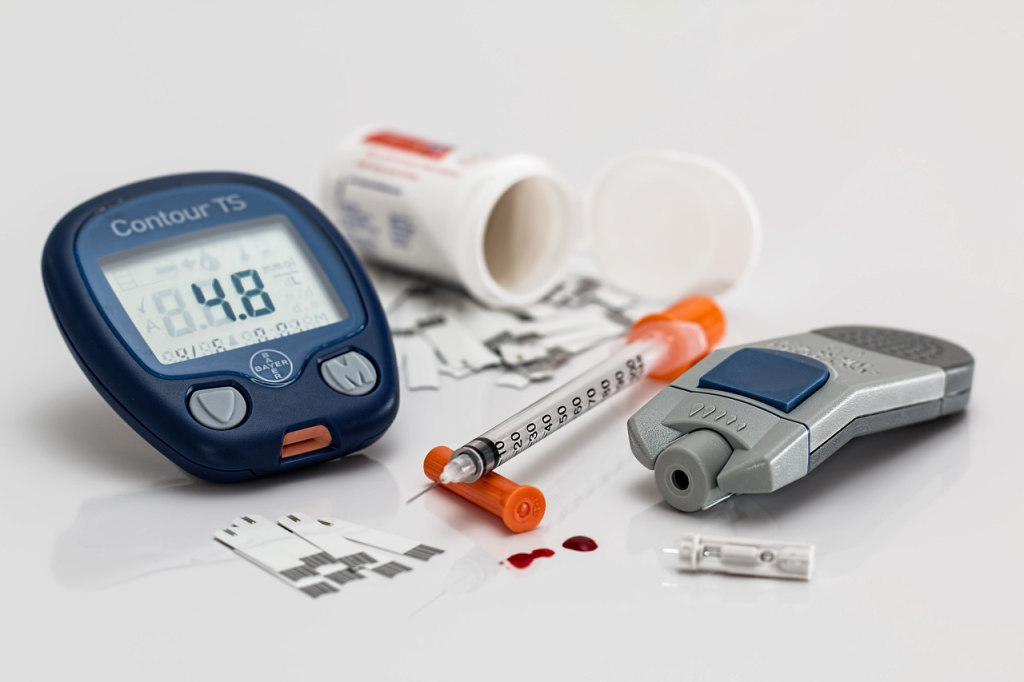
Your Essential Travel Guide to Conquering the World with Diabetes:
So you’ve got the travel bug, but you also manage diabetes. Don’t worry, that doesn’t have to hold you back! With a little planning and preparation, you can embark on incredible adventures and relaxing retreats while keeping your health on track. Here’s your guide to conquering the world with diabetes:
Planning Makes Perfect
- Doctor, Doctor: Schedule a pre-travel checkup and get a Doctor’s Letter. Discuss your itinerary, especially time zone changes, and get any medication refills or adjustments needed.
- Insurance: Make sure your travel insurance covers diabetes and pre-existing conditions.
- Diabetic Bracelet: Embarking on some solo travelling or want to take some extra precaution? Consider wearing a diabetic bracelet in case of an emergency.
- Research is Key: Look into healthcare availability at your destination, and research local foods to understand carb content. Different food groups contain different carbohydrate amounts, so will require differing amounts of insulin . Consider consulting a diabetes travel specialist for in-depth guidance. Self-catering options can give you more control over your meals.
- Know the Local Temperature: Heat can cause you to dehydrate and so increases the chance of you experiencing high blood sugar levels. You may need to adjust your basal insulin dose if you are visiting somewhere hot and humid. Talk to your doctor about this before setting off on your travels.
- Know the Local Language: Learn how to say “I have diabetes” and other essential phrases in the local language of your destination.
“Tengo diabetes” – Spanish
“J’ai du diabète” – French
“Ich habe diabetes” – German

Packing for Success
- Pack Smart: Bring double to triple the supplies you think you’ll need, including insulin, syringes/pens, test strips, glucometer, and a sharps container . This will provide you with peace of mind if you stay any longer than expected, or there are disruptions. Don’t forget to pack medications in their original labelled containers.
- Cool and Collected: For hot climates, invest in a cooling case or Frio bag to keep insulin at the right temperature.
- Paper Trail: Carry a doctor’s letter explaining your condition, a prescription for your medication, and a medical ID card or bracelet.
- Activity Specific: Know you’ll be hiking, running or walking a lot more? Use your MyHealthKit to ensure proper foot care and make good use of the items like your shoe horn, bamboo socks, underfoot mirror, etc
- Invest in a good pair of walking boots that fit well but aren’t too tight to cause blisters. Use the poron 96 patina insole provided in the kit to maximise your foot protection. Consider purchasing beach appropriate shoes for walking or swimming in. When your feet are cold and wet, it becomes easier for cuts and scrapes to go unnoticed. Make sure to dry your feet as soon as possible to prevent wounds and infections
Hitting the Road (or Skies)
- Clear Communication: Inform airport security about your diabetes supplies and potential need for additional screening. Insulin pumps should not go through airport security scanners. Make sure you have a doctor’s letter explaining what the pump is and anticipate a pat down from security, or request an alternative screening method.
- Carry-On Essentials: Keep essential supplies like your glucometer, test strips, insulin and other medication for the duration of your flight in your carry-on luggage. Insulin should not go in hold luggage as if it freezes it will become unusable. Bring along snacks for the flight, especially some higher sugar content snacks in the case of a hypo, as your mealtimes will not be flexible on board.
- Inform Airline: Tell your airline you have diabetes when booking your flight tickets to get the right to an extra cabin bag just for your insulin. Flight staff can put this in the fridge for the duration of the flight.
- Time Zone Tango: Discuss how to adjust your insulin schedule with your doctor to account for time zone changes and long-haul flights.
Keeping Healthy on the Go
- Be Activity Savvy: Factor in increased activity levels while traveling and adjust your insulin or meal plan accordingly.
- Monitor and Manage: Test your blood sugar regularly and adjust your medication as needed. Don’t let the excitement of travel derail your usual management routine.
Remember: With a little planning and these handy tips, you can travel the world with confidence and enjoy unforgettable adventures, all while keeping your diabetes in check.








